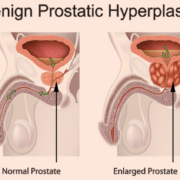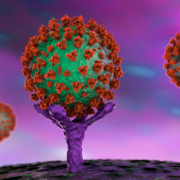The Dog Will See You Now
The Memo title is from Malcolm Gladwell’s podcast about canine screening of disease, and I would urge you to listen to it. While the focus is on prostate cancer, the logical question comes up: could dogs be used to screen people for COVID-19? The answer is yes. No one knows for certain whether they can they smell the virus, but they can smell the proteins that are being made when the virus replicates in the body. Maybe it’s the spike protein, maybe a different one, but the tests indicate dogs can smell a person’s mask and identify COVID infections immediately with an accuracy of 83% and higher; some dogs approached 99% accuracy.
Will we see dogs checking folks at the door any time soon? I doubt it, whether for COVID testing or any other type of disease. Why not? Let’s take a look.
The Problem with Dogs
Science has shown that dogs can detect odors down to 1.5 molecules per trillion. They don’t even have to be purebred dogs; mixed breeds can be taught to do it. Therein lies the problem: training. It takes time to train the dogs to be able to distinguish that one unique scent among the hundreds of thousands they may encounter in an airport, a school, or a place of business.
They also get tired, not physically but mentally. They’re still dogs that want to run, jump, and play. They love to work, but they’re not like an inanimate testing device that accepts samples and tests them all day long without needing to be fed and given bathroom breaks. Dogs get fatigued, and that means they could make mistakes.
Those are just details that can be worked out. Dogs can screen up to 250 people in an hour at an estimated cost (including their handlers) of about $2 per person. Compare that with a PCR test for COVID-19 that can cost $200 per person. The real problem lies with humans.
The Healthcare Complex
It would be easy to criticize the medical community for not wanting to endorse this unconventional approach to medicine. The papers I read thought it was impractical to train dogs to do such screenings.
What they would rather do is develop an artificial neural nose that could do the job instead. One big problem with that: they have no clue what the dogs actually detect when they perform the screening. They admit that “clinical diagnostic techniques, artificial intelligence, and molecular analysis remain difficult due to the significant divide between these disciplines.” It could take years to come up with such an artificial nose, and then you’d need humans to manufacture, operate, and maintain those devices; I don’t even want to think what the costs would be. Dogs are already being trained that can be ready in a couple of months.
I’ll let you draw your own conclusions as to why the healthcare complex is resistant to pursuing the canine screening solutions. But I suspect health insurance companies and other organizations such as school districts that actually pay the bills will pay a lot of attention to the difference in price as well as the timeline.
The Bottom Line
If I could train a dog to identify a vitamin or mineral deficiency by sniffing the breath, the urine, or feces of humans, I wouldn’t waste time—I’d do it right now. It’s not a threat to what I do; it would be a powerful tool to use to help people address their nutritional deficiencies perhaps before they manifest in disease.
Do we want to get kids back in school? I’d love to know a dog was testing Riley and all his classmates, teachers, and staff every day before they walk in the building. Getting the subjects to not play with the testing equipment would probably be the biggest hurdle, but we’ve been teaching Riley to recognize dogs that are working and not to bother them. Yes, we’d need a lot of dogs, but we can get that done if we’re really committed.
Let’s hope the healthcare complex realizes they already have the noses they need to get the job done, and all the bearers of those noses want is to play with a ball as a reward for their hard work. I’ll say it again: it’s time to let the dogs out.
What are you prepared to do today?
Dr. Chet
References:
1. J Travel Med. 2020 Dec 23;27(8):taaa131. doi: 10.1093/jtm/taaa131.
2. PLoS One. 2021.16(2):e0245530. doi: 10.1371/journal.pone.02455









